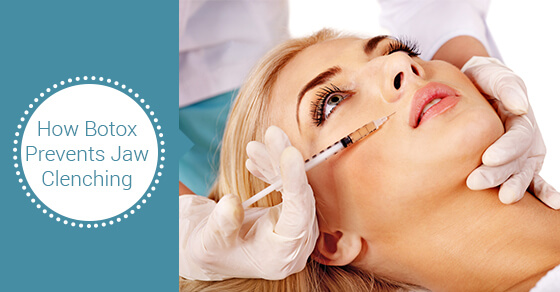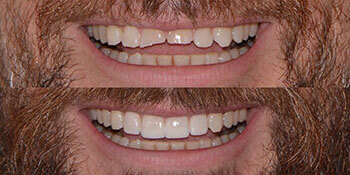Dental Articles - Toronto
How Does Botox Help Stop Clenching Your Jaw?
Posted by City Oasis Dental on Mon, 18 Jan 2016
Botox Toronto | Do You Suffer From Tension Headaches? How Botox works and what symptoms does it alleviate? Battling Bruxism with Botox.

It’s a stressful world, and it seems to get increasingly stressful by the day. While meditation, yoga, massages and similar relaxation methods are essential in keeping a calm, centered life, it’s not always easy to fit them in.
Unfortunately, stress and other factors such as disharmony of your jaw and teeth can lead someone to develop negative habits such as jaw clenching or nighttime bruxism. These habits can further leads to temporomandibular joint disorders (TMD) and tensioned related headaches.
Do You Suffer From Tension Headaches?
Nothing quite adds to the stress of the day like a tension headache. This is one of the most common types of headaches, and it is well-known for causing severe pain and discomfort. As you can probably imagine, the increased pressure from clenching the jaw does not exactly fare well with the person’s comfort level.
Preventing the jaw muscles from contracting too tightly can significantly reduce the amount of pain associated with a tension headache; of the patients who make excellent candidates for receiving Botox treatments at their dental clinic, approximately 40% suffer from these headaches on a regular basis. Relief can occur in as little as a few days post-treatment, but it commonly takes two weeks for one to notice a complete dissipation of the pain caused by tension headaches.
Battling Bruxism with Botox
Bruxism is another severe condition that should never be taken lightly; an individual who involuntarily grinds their teeth are putting themselves at risk for developing a number of serious oral health problems, including excessive wear on the chewing surfaces of the teeth as well as temporomandibular joint disorders(TMD). The latter consist of various conditions that cause pain and abnormal functioning of the jaw joints and the muscles which control the jaw.
If left untreated, TMD can lead to headache, lockjaw and permanent problems with one’s ability to speak and eat properly. As such, it is crucial to stop the issue at its source; since the vast majority of Bruxism patients grind their teeth and clench their jaws unconsciously, treatments must address the condition with this important piece of information in mind.
While night guards can do much in the way of preventing a person from unknowingly harming their mouth during sleep, the same cannot be said for patients who are awake or cannot tolerate their night guards.
Contrary to popular belief, many people diagnosed with TMD and tension headaches are those who clench their jaw not only at nighttime, but during the daytime as well. Since it is unrealistic to assume that most of these individuals will wear a mouth guard 24/7, Botox is widely considered the best solution.
Botulin Toxin Type A (the official name for BOTOX) is well known for its common use in the field of cosmetic enhancements for wrinkle removal. Nowadays, thousands of dentists and cosmetic surgeons across the world have becoming to rely on Botox by using its unique property to weaken the masseter muscle in the mouth enough to prevent the harmful effects of Bruxism, as well as diminish the amount of suffer from tension headaches when injected to the various trigger points.
Due to the fear many people have concerning Botox treatments in general, it is worth noting that Botulin Toxin only affects targeted nerves; it is completely safe and used only to dissipate the pain and discomfort caused by TMD, and not by adding to it.
How Botox works and what symptoms does it alleviate?
Although dental devices (i.e. mouth guards) and anti-inflammatory medication can reduce the pain associated with jaw clenching, doctors have found these treatments to be ineffective when it comes to targeting the source. On the other hand, the routine systemic pain medications that are normally prescribed by the medical doctors to help with the treatment of tension headaches, usually have multiple harmful side effects that are highly undesirable. Botox treatment in comparison is definitely a more desirable choice that can drastically improve the quality of life.
After a concentrated amount of Botox has been injected into the masseter muscle, the latter in effect becomes docile and unable to contract nearly as hard. Since this is the main muscle responsible for jaw movement, it is not hard to tell why Botox is so effective in keeping bruxism at bay. At the same time for treatment of tension headaches, BOTOX can be injected into frontal, temporal and other tensioned muscles on the craniofacial complex to relieve the symptoms of headache by relaxing the tensed muscles and relieve of tensioned trigger points.
With just one treatment, everything from involuntary grinding/clenching to sore jaws to tooth wear to routine tension headaches can be decreased drastically. The best part about using Botox for either conditions is that the toxin doesn’t interfere with voluntary jaw movements; patients can speak, eat, and make the same facial expressions just as they normally would without the treatment. Patients often also benefit from the side effect of BOTOX treatment for TMD, which is the diminished appearance of wrinkles and a slimmer jawline.
Each Botox treatment typically lasts up to two to four months, but can have a significant effect on your quality of life.
Contact the dental experts at City Oasis Dental to schedule a free consultation today!
Dentist Toronto

